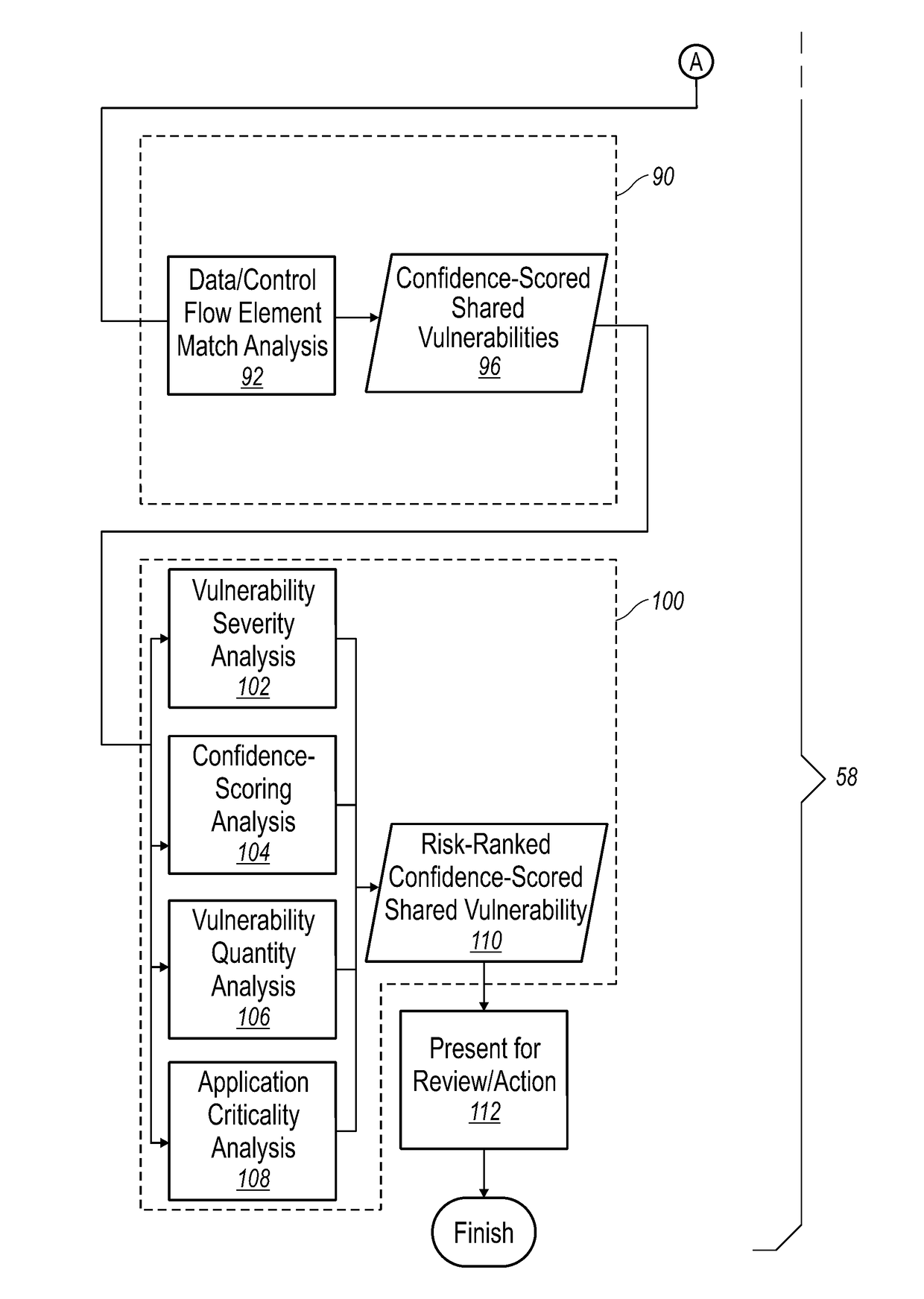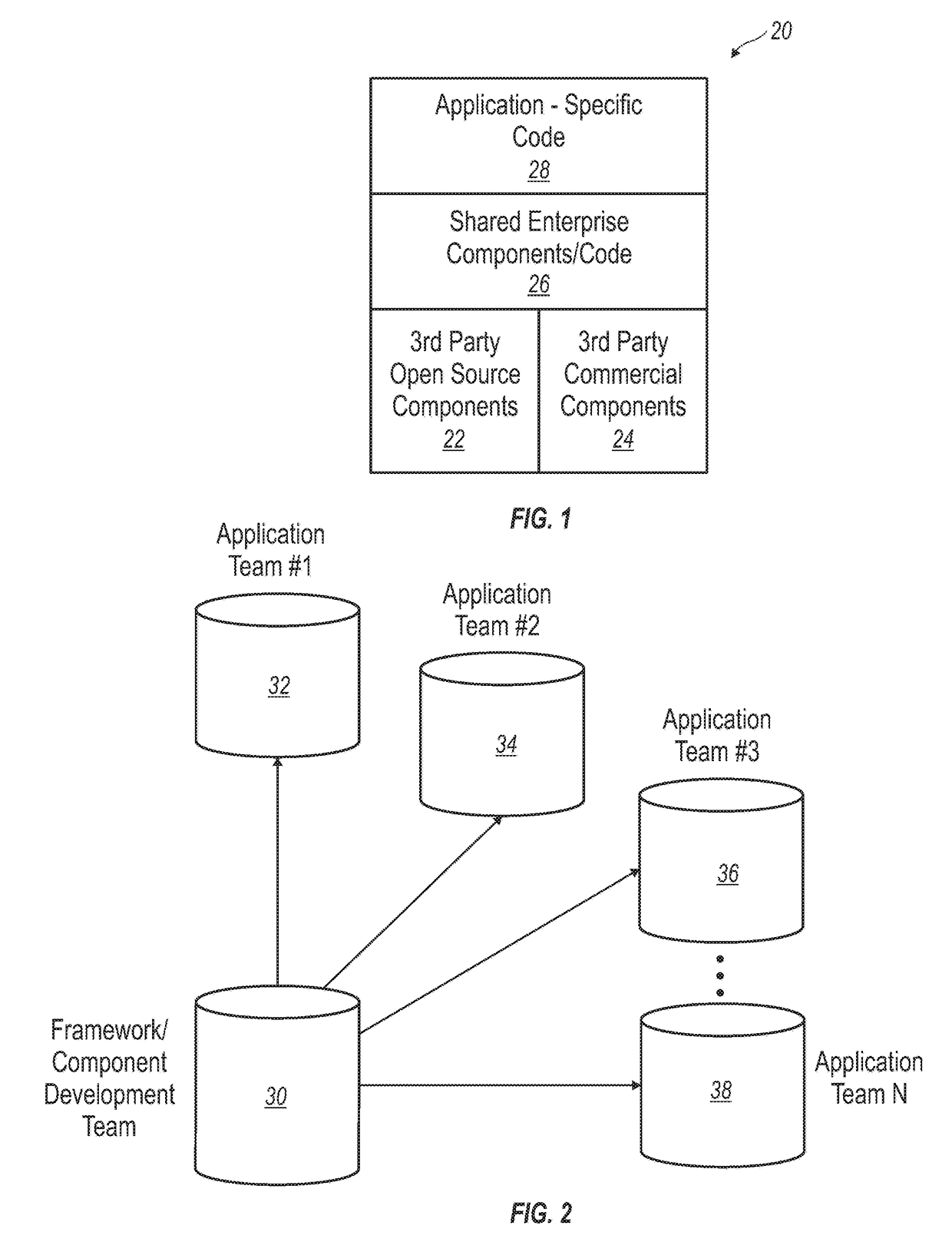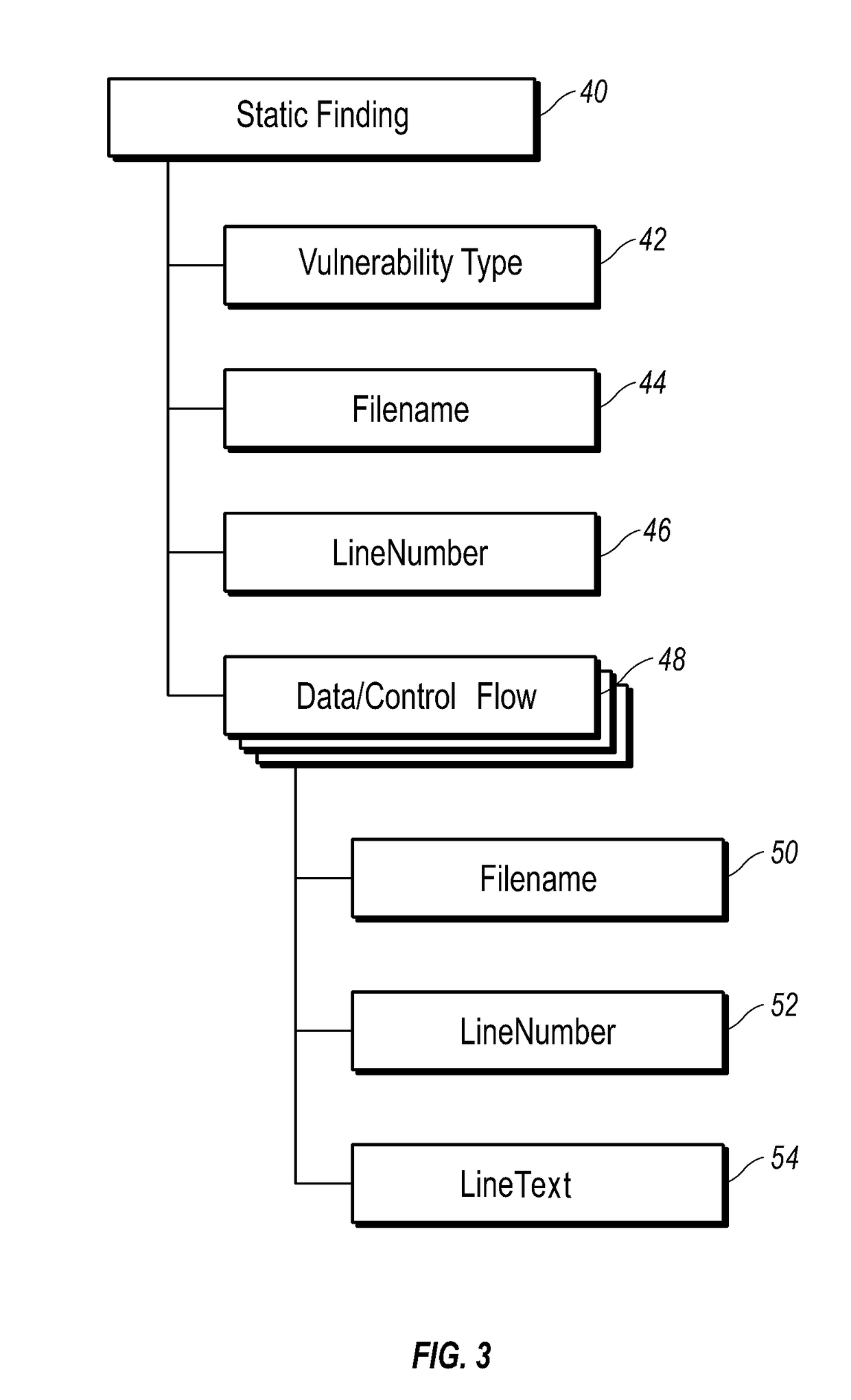Method of Detecting Shared Vulnerable Code
- Summary
- Abstract
- Description
- Claims
- Application Information
AI Technical Summary
Benefits of technology
Problems solved by technology
Method used
Image
Examples
Embodiment Construction
[0018]Referring to FIG. 4A, an embodiment 58 of the invention includes the first step of performing either static analysis security testing (SAST) or interactive application security testing (IAST) 60 on at least two applications 62 within the organization. The SAST or IAST vulnerability results are then added to a consolidated vulnerability database 70.
[0019]In step 72, the method identifies shared vulnerability candidates 74 using the database 70. This is done by matching file name and line number (step 76) of vulnerabilities located within multiple applications. However, if applications are consuming different versions of shared components, matching only the file / package name and line number may not be correct, as line numbers could have changed between versions if code above or below the line in question had been added or removed.
[0020]Referring to FIG. 5, a shared component 82 has code in files “shared / A.java” and “shared / B.java.” Downstream Application 1 has application-specif...
PUM
 Login to View More
Login to View More Abstract
Description
Claims
Application Information
 Login to View More
Login to View More - R&D
- Intellectual Property
- Life Sciences
- Materials
- Tech Scout
- Unparalleled Data Quality
- Higher Quality Content
- 60% Fewer Hallucinations
Browse by: Latest US Patents, China's latest patents, Technical Efficacy Thesaurus, Application Domain, Technology Topic, Popular Technical Reports.
© 2025 PatSnap. All rights reserved.Legal|Privacy policy|Modern Slavery Act Transparency Statement|Sitemap|About US| Contact US: help@patsnap.com



